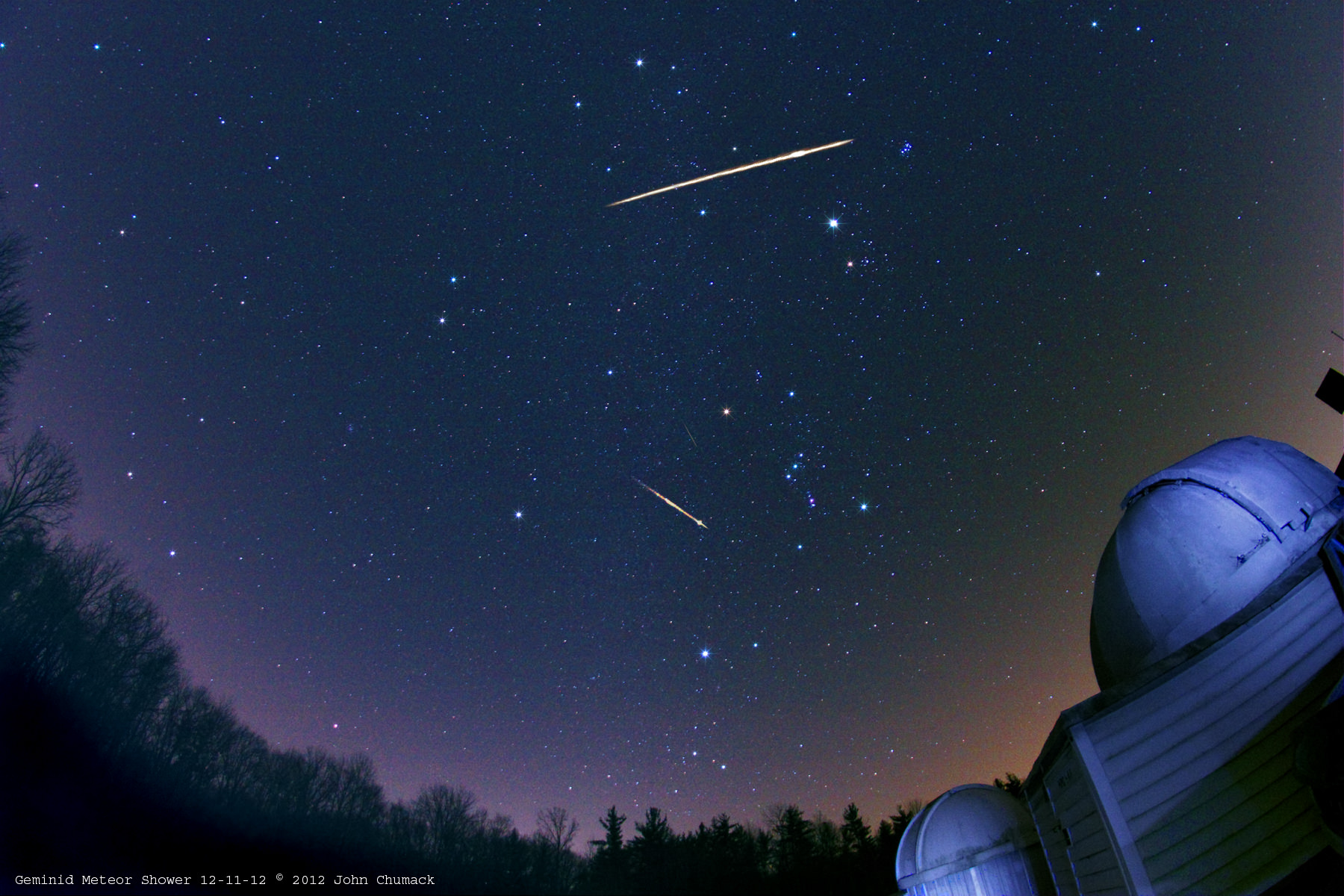Winter Milky Way Geminids on December 12, 2012. Credit:
John Chumack
The Geminid Meteor Shower is underway, with the peak on December 13th and 14th! SpaceWeather.com is reporting that international observers are counting as many as 50 meteors per hour as Earth plunges into a stream of debris from rock comet 3200 Phaethon.
Astrophotographer John Chumack in Ohio, USA
took the image of a bright fireball last night (Dec. 12/13) and said he was seeing one or two meteors every minute or so, describing the sky show as "definitely one of the best Geminid showers I've seen in over 20 years!"
John also compiled a video, below.
So if you've got clear skies, get out there and look up! The best time to look will be after dark on Thursday, December 13 and before dawn on Friday, December 14.
The Geminids are notably one of the most reliable meteor showers, and this year the timing is great as the new Moon won't intefer with the shower. Astronomers from McDonald Observatory at the University of Texas predicts skywatchers can expect to see dozens of meteors per hour.
Additionally, NASA says that for the first time, Earth might also pass through the tail of another object,
comet Wirtanen,
which could possibly provide even more meteors in the sky. No one is really sure what kind of meteor action this comet will produce, but Bill Cooke of NASA's Meteoroid Environment off says even if the new shower is a dud, the Geminids should be great.
For the Geminids, meteors will appear to originate from the constellation Gemini, although they should be visible all over the sky. If Wirtanen does contribute to the shower, they may appear to come from the constellation Pisces.
If you've got cloudy skies or its too cold outside, there are a few alternatives:
NASA TV is going to have a live broadcast
from 11:00 pm-3:00 am EST.
You can follow along via Twitter and MeteorWatch. All you need to do is check for the
meteorwatch
hashtag, and people will be posting descriptions and images.
You can also "listen" to the meteor shower: The Air Force Space Surveillance Radar is scanning the skies above Texas. When a meteor or satellite passes over the facility--ping!--there is an echo. Check out
SpaceWeatherRadio for the broadcast.
 Universe Today
Universe Today
